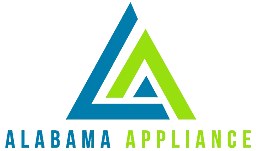
Appliance doesn't turn on:
Ensure that the appliance is properly plugged into a functioning power outlet.
Check if the circuit breaker or fuse related to the appliance has tripped. Reset it if necessary.
Examine the power cord for any signs of damage. If damaged, replace it or contact a professional for repairs.
Verify if there is a specific power switch or button that needs to be turned on for the appliance to operate.
Appliance is not functioning correctly:
Refer to the appliance's user manual for troubleshooting steps and potential error codes.
Restart the appliance by unplugging it, waiting for a few minutes, and plugging it back in.
Check if the appliance has any filters or vents that might be clogged. Clean or replace them as needed.
Ensure that the appliance is receiving the appropriate power supply (voltage and frequency) according to its requirements.
If the issue persists, contact the manufacturer's customer support or a professional repair service.
Appliance is making unusual noises:
Determine the source of the noise. It could be due to loose parts, foreign objects, or mechanical issues.
Tighten any loose screws or connections within the appliance.
Clear out any debris or foreign objects that may have entered the appliance.
Lubricate moving parts, such as motors or hinges, with appropriate lubricants as recommended by the manufacturer.
If the noise continues, seek assistance from a professional technician.
Appliance is not heating/cooling properly:
Check if the appliance's temperature settings are correct.
Clean the appliance's filters, coils, or vents, which can become dirty and impede proper heating or cooling.
Ensure that the appliance has adequate ventilation and is not obstructed by objects.
For appliances such as refrigerators, confirm that the door seals are intact and sealing properly.
If the issue persists, it may require professional repair or servicing.
Appliance is leaking:
Determine the source of the leak. It could be from hoses, connections, or internal components.
Check that all water supply lines and connections are secure and tightened.
Examine the appliance's drain hoses or pipes for any clogs or blockages.
Inspect the appliance's gaskets, seals, or door hinges for any signs of damage.
If the leakage persists, it's advisable to contact a professional technician for repairs.
Remember, safety is crucial when dealing with household appliances. If you're uncertain about any troubleshooting steps or encounter a complex issue, it's best to seek assistance from a professional appliance repair service or the manufacturer's customer support.




